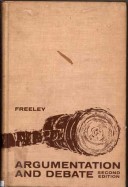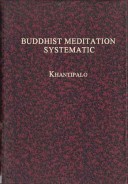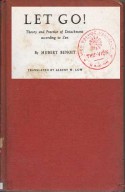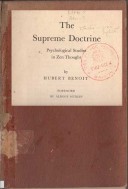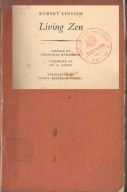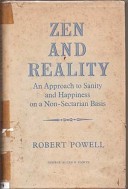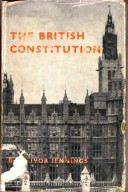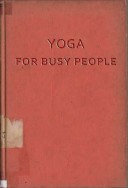Tìm Sách
Sách tiếng Anh-English >> Argumentation and Debate
Thông tin tra cứu
- Tên sách : Argumentation and Debate
- Tác giả : Austin J. Freeley
- Dịch giả :
- Ngôn ngữ : Anh
- Số trang : 454
- Nhà xuất bản : John Carroll University- Wadsworth Publishing Co., Inc., Belmont, California
- Năm xuất bản : 1969
- Phân loại : Sách tiếng Anh-English
- MCB : 12010000005167
- OPAC :
- Tóm tắt :
Argumentation and Debate
Rational Decision Making
Second edition
AUSTIN J. FREELEY
John Carroll University
Wadsworth Publishing Co., Inc., Belmont, California
PREFACE
The world’s store of knowledge doubled from 1750 to 1900. It doubled again from 1900to 1950 and again from 1950 to 1960. The next doubling will probably take place before 1968. By the year 2000, there will be over a thousand times more knowledge than there was in 1900. Today’s students - who will be mature adults occupying the major decision-making positions as we enter the twenty-first century-will be called upon to face problems we cannot even imagine and to reach decisions based on evidence that does not now exist.
Much of what today’s students are learning will be obsolete before we enter the twenty-first century. Of this much, however, we can be sure – through the 1970s, 1980s, 1990s, and into the next century, men will face new problems. They will have to analyze these problems, discover the issues, seek out unfamiliar evidence and opinion. Space-age computers and information-retrieval systems will produce data in nanoseconds; but man must program the computer and tell it what to produce. Man must still weigh the data that comes before him and seek to arrive at rational decisions
CONTENTS
Preface
1. RATIONAL DECISION MAKING
Debate, 2. Individual Decisions, 5. Group Discussion, 6.Persuasion, 7.Propaganda, 8. Coercion, 9. Combination of Methods, 10
2. SUBSTANTIVE AND EDUCATIONAL DEBATE
Substantive Debate, 14. Educational Debate, 16. Ethical Standards for Debate, 25
3. STATING THE PROBLEM
Defining the Problem, 27. Phrasing the Debate Proposition, 28. Presumption and Burden of Proof, 30. The Prima Facie Case, 34. Phrasing the Proposition for Educational Debate, 35. Choosing the Proposition for Educational Debate, 36. Types of Debate Proposition, 38.
4. ANALYZING THE PROBLEM
The Importance of Defining Terms, 42. Methods of Defining Terms, 43. Issues, 48.
5. EXPLORING THE PROBLEM
Sources of Material, 57. Organizing Research, 63. Reading with a Purpose, 65. Reading Critically, 66. Recording Materials, 66. Organizing Materials, 69
6. EVIDENCE
Sources of Evidence, 74. Types of Evidence, 78. the Probative Force of Evidence, 87.
7. THE TEST OF EVIDENCE
Uses of Test of Evidence, 91. Tests of Logical Adequacy, 93. Tests of Audience Acceptability, 104.
8. REASONING
The Nature of Reasoning, 108. The Degree of Cogency, 108. Tests of Reasoning and Their Uses. 111. Types of Reasoning and Tests for Each Type, 112. General Tests of Reasoning, 125.
9. THE STRUCTURE OF REASONING
Types of Syllogism and Tests for Each Type, 129. The Enthymeme, 134. Formal validity and Material Truth, 138. A Structure Model for Argument, 139.
10. EXTENSIONAL DEVICES
Language problems in Reasoning, 146. Types of Extensional Devices, 148. Uses of Extensional Devices for the Advocate, 152.
11. OBSTACLES TO CLEAR THINING
Fallacies of Evidence, 156. Fallacies of Reasoning by Example, 157. Fallacies of Reasoning by Analogy, 157. Fallacies of Causal Reasoning, 158. Fallacies of Sign Reasoning, 158. Fallacies of Syllogism and Enthymemes, 159. Fallacies of Language, 159. Fallacies of Pseudo-Arguments, 161.
12. BRAINSTORMING FOR IDEAS
Method of Brainstorming, 171. Uses of Brainstorming, 173. Limitations of Brainstorming, 174.
13. BUILDING THE BRIEP
Uses of the Brief in Argumentation, 176. The Traditional Brief, 177. Organization of the Brief, 177. Outline of a Typical Traditional Brief, 179. A Sample Brief, 181. The Full Brief, 183. The Flexible Brief, 183. Limitations of a Brief, 183.
14. REQUIREMENTS OF THE CASE
Requirements Inherent in the Proposition, 187. Requirements Inherent in characteristics of Decision Renderers, 187. Requirement Inherent in the Occasion, 189. Requirements of Clarity and Relevancy, 189. Requirements Imposed by the Probable Case of the Opposition, 190. Requirements of Flexibility during the Debate, 191.
15. BUILDING THE AFFIRMATIVE CASE
Objectives of the Affirmative Case, 195. Types of Affirmative Cases, 196. Integrating the Case, 198. Outline of a Typical Affirmative Case, 200.
16. BUILDING THE NEGATIVE CASE
Types of Negative Cases, 207. Integrating the Case, 216. Outline of a Typical Negative Case, 217.
17. REFUTATION
Shifting Burden of Rebuttal, 224. Nature and Place of Refutation, 224. Preparation for Refutation, 226. Arranging Material for Refutation, 227. Selection of Evidence and Reasoning for Refutation, 228. Securing Evidence and Reasoning for Refutation, 229. Organization of Refutation, 230. Methods of Refutation, 233.
18. THE SPEAKER AS A PERSON
Components of Ethos, 240. Factors Contributing to Ethos, 241.
19. THE ROLE OF MOTIVATION
Ethics of Motivation, 253. Coordinate System of Analysis, 253. Formula for Motivation. 255. Some Preferences, Wants, and Beliefs of American Audiences, 255. Complexity of Motivation, 260. Analysis of the Audience, 261. Analysis of the Key Individual, 266.
20. PRESENTING THE CASE: SPEECH COMPOSITION
Differences between written and Oral Style, 271. A Philosophy of Style, 272. Factors of Style in Speech Composition, 273. Rhetorical Factors in Speech Composition, 277. Methods of Dramatization, 284. Audio Aids, 289. Visual Aids, 289.
21. PRESENTING THE CASE: DELIVERY
Method of Delivery, 294. Steps to Good Delivery, 299. Components of Delivery, 300. The Great Art is to Conceal the Art, 306.
22. EVALUATING THE DEBATE
Evaluating the Substantive Debate, 308. Evaluating Strategy, 310. Evaluating the Educational Debate, 311. Functions of the Judge, 312. Some Criteria for Evaluating Debate, 316. Functions of the Ballot, 319. Special Ballots for Special Purposes, 320.
23. MODERN PROCEDURES IN EDUCATIONAL DEBATE: TYPES OF DEBATE
Types of Debate, 324. International Debating, 336. The Audience, 337. Adapting the Debate to Communications Media, 338.
24. MODERN PROCEDURES IN EDUCATIONAL DEBATE: THE TOURNAMENT
The Tournament, 345. Types of Tournaments, 347. Tournament Schematics, 349. Selective-Pairing Tournaments, 355. Tournament Schedule, 356. Tournament Summary, 358. Tournament Adminiatration, 358. Responsibility of the Director. 361.
25. PARLIAMENTARY DEBATE
Nature and Purposes of Parliamentary Debate, 365. Sourcesof Parliamentary Debate Rules, 366. Order to Business, 367. The Agenda, 369. Presenting Motions, 369. Precedence of Motions, 370. Purposes of Motions, 371. Unanimous Consent, 375.
Appendix A: American Forensic Association: Statement of Principles, 377.
Appendix B: The First Presidential Debate, 378.
Appendix C: An Intercollegiate Debate: Public work for the Unemployed, 402
Appendix D: A Televised Intercollegiate Debate: Unions should Be under Antitrust Legislation, 424.
Appendix E: National Intercollegiate Debate Propositions, 436.
Appendix F: Other Debate Propositions, 440.
Index , 443.
 Facebook
Facebook
 Google
Google
 Google+
Google+
